Art and culture

Raimundo de Madrazo y Garreta
Salida del baile de máscaras, 1878
Colección particular
SEP.19.2025 – JAN.18.2026, MAD
Raimundo de Madrazo
The third representative—after his grandfather José and his father Federico—of the most renowned dynasty of 19th-century Spanish painting, Raimundo de Madrazo developed his entire artistic career between Paris, where he arrived at age 20, and the United States, where he conducted various portrait tours starting in 1897 while his role in the French art scene gradually diminished. His body of work centers around genre painting and portraiture. In the former, he stood out for the exquisite detail of his interiors and his skills as a master colorist. As a portraitist, he was one of the favorite painters of Parisian and American high society.
Organized in collaboration with the Meadows Museum in Dallas, this exhibition is the first major retrospective of one of the most cosmopolitan painters and finest technicians of his time.
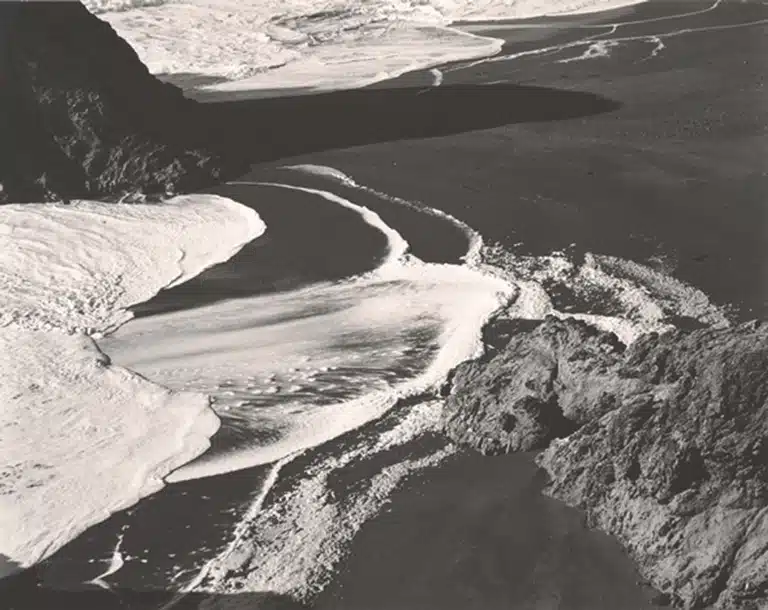
Edward Weston
Surf, Bodega, 1937
Center for Creative Photography, The University of Arizona
© Center for Creative Photography, Arizona Board of Regents
SEP.19.2025 – JAN.18.2026, MAD
Edward Weston
The Matter of Forms
Edward Weston (Illinois, 1886 – California, 1958) played a key role in the transformation of photography into an autonomous artistic language. Co-founder of Group f/64, Weston championed a new aesthetic based on formal precision, simplicity, and the poetic intensity of the image. His work, deeply rooted in the American landscape and visual culture, reflects the transition from Pictorialism to Straight Photography, of which he was one of the main proponents. The more than 200 photographs included in the exhibition offer a comprehensive overview of his entire career, from his Pictorialist beginnings to his recognition as one of the foremost figures of Straight Photography.
Exhibition organized with the support of the Center for Creative Photography at the University of Arizona, Tucson.
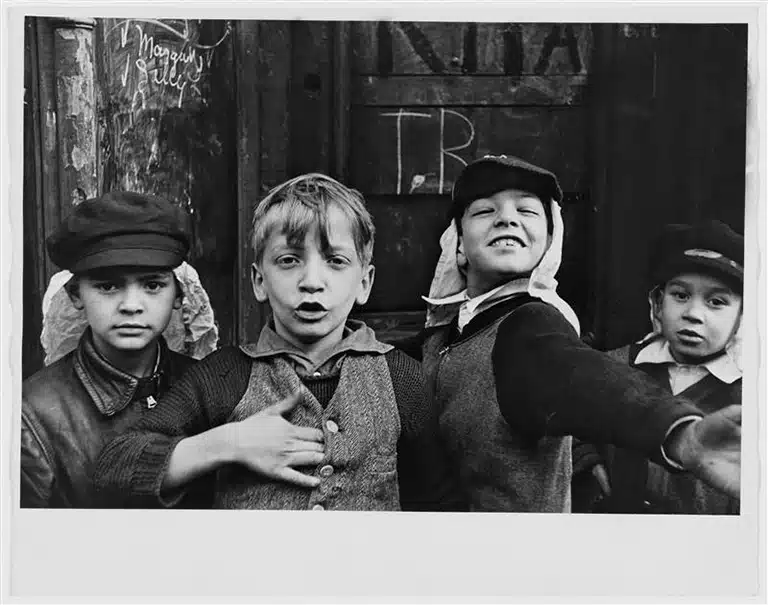
Helen Levitt
New York, c.1940
© Film Documents LLC, courtesy Zander Galerie, Cologne
SEP.24.2025 – FEB.1.2026, BCN
Helen Levitt
Helen Levitt (1913–2009) began photographing her native New York in the late 1930s, capturing images that reflected life in the poorest neighborhoods, especially children and their games in the streets. She did so with an unerring instinct for capturing, beyond the scenes of childhood, all the emotion, mystery, and humor of everyday life. Her work soon gained the recognition it deserved, and in 1943 the MOMA in New York organized her first solo exhibition. Throughout her career, she also paid close attention to the medium of film.
A socially committed artist, Levitt was one of the first women to forge a professional career in photography. The exhibition (nearly 200 photographs organized into nine sections) offers a comprehensive overview of her entire career.

Abril Coudougnan
Untitled, project Tous les mots maux sont inventés, 2024
Digital Photography
© Abril Coudougnan
SEP.24.2025 – FEB.1.2026, BCN
KBr Flama’25
KBr Fundación MAPFRE hosts the fifth edition of its annual appointment with the emerging talent of the new generations of photographers who begin their professional careers after their training in Barcelona. This year the exhibition brings together the work of Bernat Erra (Barcelona, 2003), Irina Cervelló (Martorell, 2001), Abril Coudougnan (Perpinyà, 1999) and Patrick Martin (Stockport, England, 1996), selected by a jury made up of Javier Martín, Arianna Rinaldo and María Santoyo. All of them share a critical and sensitive look towards the construction of memory, whether intimate, collective or territorial.

Felipe Romero Beltrán
Frame. Rafa's Room, 2021-2024
© Felipe Romero Beltrán
Felipe Romero Beltrán. Bravo
– 29
Carré d’Art Nimes (Nimes, France)
Border. Conflict. Visual reflection.
Felipe Romero Beltrán’s photographic practice (Bogotá, 1992) sits at the edges of documentary photography, using elements typical of the genre—such as direct recordings of everyday life and the creation of documents about a defined historical reality—and placing them in dialogue with artistic, painterly, or performative elements. The result is a body of images that go beyond the purely photographic to encompass the full scope of visuality.
Throughout his career, Romero Beltrán has consistently been drawn to territories that are, or have been, sites of tension, conflict, and visual reflection. A prime example is his project Bravo, which won the 2023 edition of the KBr Photo Award, the award that supports new projects through a cash prize, an exhibition of the project in our two galleries (Barcelona and Madrid), and the publication of the corresponding catalog.
Set in the space where those hoping to cross the river into the United States wait for the right moment, Bravo is, in the photographer’s own words, an essay documenting the bodies, objects, and architecture of a place that, during this period of waiting, precedes the border.
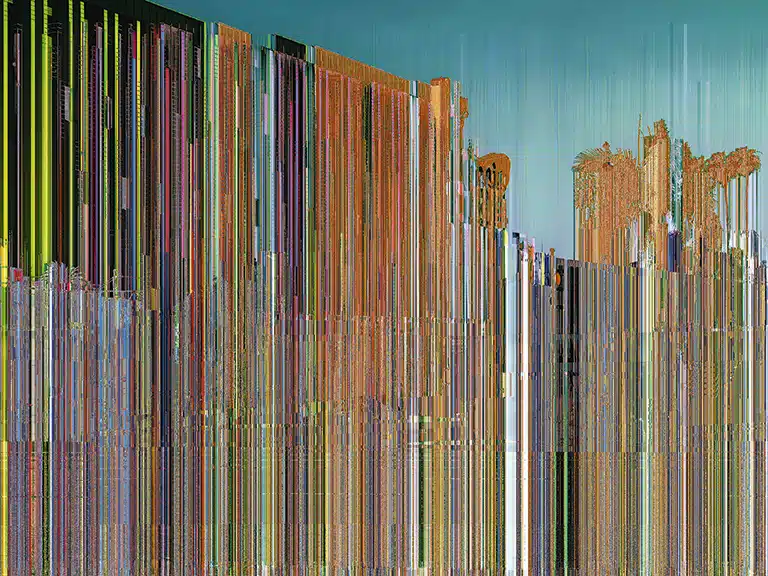
José Guerrero
GFK #001, 2004
Courtesy of Galería Alarcón Criado
© José Guerrero, VEGAP, Madrid, 2025
José Guerrero. On the subject of landscape
– 25
José Guerrero Center (Granada)
Intrigue. Seriality. Renewal.
José Guerrero (Granada, 1979) conceives landscape as an active and dynamic entity where the sociopolitical, cultural, and collective imaginary intertwine in intriguing ways.
For Guerrero, photographing a territory, landscape, or place involves engaging with the relationships of proximity, the alterations, and the tensions they embody, thereby rejecting the modern conception of landscape as something purely natural and detached from us.
His artistic output is characterized by a meticulous organization into series, which together form a fluid mosaic of meanings. In some of these series, Guerrero deliberately employs certain conventions of natural and architectural landscape inherited from modern photography, such as defined horizons, the theatricality of the sky and clouds, or color saturation. This approach invites the viewer to experience a renewed way of seeing, beyond mere contemplation.
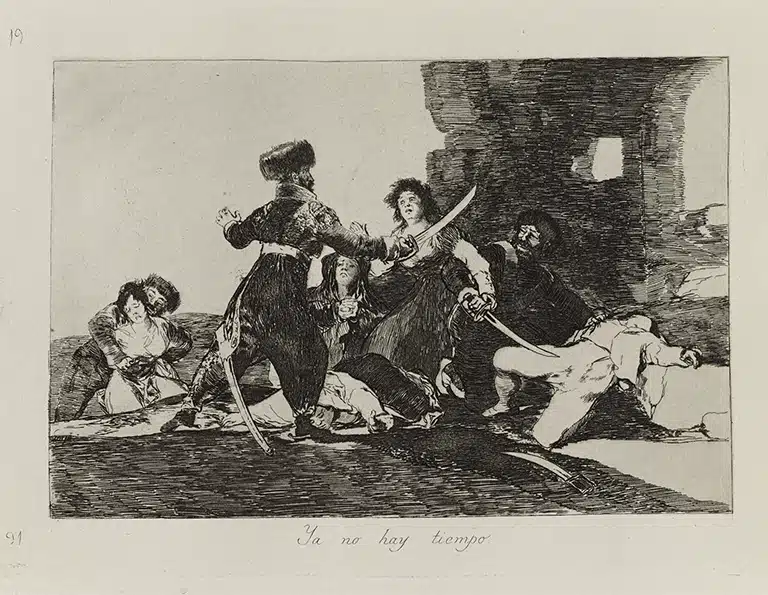
Francisco de Goya
There Is No Time, ca. 1810-1814 /1906
Fundación MAPFRE Collections
© Francisco de Goya. The Disasters of War
Francisco de Goya y Lucientes. The Disasters of War. Fundación MAPFRE Collections
– 11
The Grand Master’s Palace (La Valletta, Malta)
Reformism. Reflection. Testimony.
Francisco de Goya y Lucientes was born in 1746, in Fuendetodos, Zaragoza. There he studied with José Luzán, through whom he came into contact with the art of engraving. His work is the result of constant experience and reflection, shaped by his enlightened reformism, which opposed the traditionalism deeply rooted in Spanish society. Unlike many of his contemporaries, Goya left us a profoundly lucid and conscious testimony of his time.
In the months following the French invasion and the beginning of the Peninsular War (1808–1814), a conflict that pitted the Spanish people against the French troops, the artist experienced the numerous upheavals accompanying the fall of the Ancien Régime.
In 1810, he began the etching series “The Disasters of War”, consisting of 80 titled and numbered plates, executed primarily in etching with a number of additions in drypoint and aquatint, and printed in black ink. They were first published by the Royal Academy of Fine Arts of San Fernando, and the fourth edition, which forms part of the Fundación MAPFRE Collections, was produced in 1906 at the Calcografía Nacional.
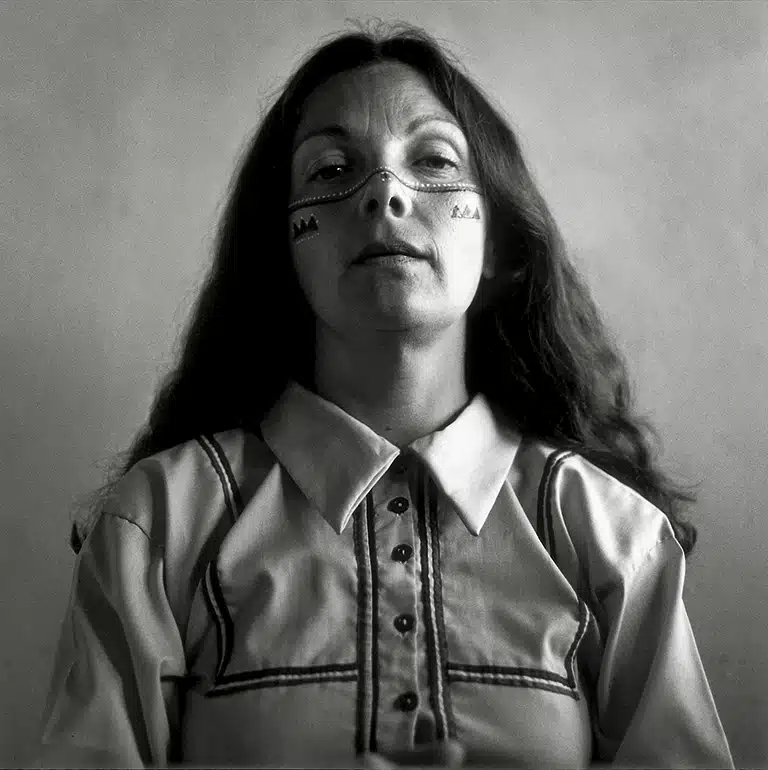
Graciela Iturbide
Self-Portrait with the Seri People, Sonoran Desert, Mexico, 1979
Fundación MAPFRE Collections
© Graciela Iturbide
Graciela Iturbide. Fundación MAPFRE Collections
– 12
International Center of Photography (ICP)
Ritual. Nature. Culture.
The work of Graciela Iturbide, one of the most prominent Mexican photographers on the international contemporary scene, is key to understanding the evolution of photography in Mexico and across Latin America.
Straddling the documentary and the poetic, her singular way of seeing integrates lived experience and dreams into a complex web of historical, social, and cultural references. The fragility of ancestral traditions and their precarious survival, the interaction between nature and culture, the importance of ritual in everyday gestures, and the symbolic dimension of landscapes and found objects occupy a central place in her prolific career. Her work is characterized by a continuous dialogue between images, time, and symbols, unfolding in a poetic display where dream, ritual, religion, travel, and community converge.
Celebrated for her portraits of the Seri people, her vision of the women of Juchitán, and her photographs of birds, Graciela Iturbide’s visual journey has extended, beyond her native Mexico, to countries as diverse as Spain, the United States, India, Italy, and Madagascar.

